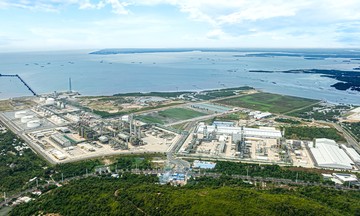The US and the European Union (EU) have reached a framework trade agreement, with the US imposing a 15% tariff on most EU goods. In return, the EU pledged to spend $250 billion annually on US oil, liquefied natural gas (LNG), and nuclear technology over the next three years.
This commitment comes as US energy exports totaled $318 billion last year, according to the US Energy Information Administration. Of this, the EU imported $76 billion in oil, LNG, and solid fuels like coal, per Reuters.
Analysts question the feasibility of the EU more than tripling its imports. Arturo Regalado, senior LNG analyst at Kpler, described the agreement's scope as "beyond market realities." "Either US oil flows would need to be entirely redirected to the EU, or the value of LNG imports from the US would need to increase sixfold," Regalado explained.
Analysts Andreas Schroder and Ajay Parmar of ICIS, a UK-based market data firm, share similar views. "Europe would either have to pay exceptionally high, non-market reflective prices for US LNG, or import volumes beyond its consumption capacity," they commented.
 |
LNG storage facilities in Texas, USA on 11/2/2023. Photo: *Reuters* |
This scenario is further complicated by other countries competing for US energy supplies and having made import commitments in past and ongoing trade negotiations with the Trump administration.
For example, Japan agreed to "significantly expand" US energy imports in a deal signed last week, according to a White House statement. South Korea also expressed interest in investing in and purchasing fuel from an Alaskan LNG project while pursuing a trade agreement with Trump.
Moreover, while the EU made the pledge, regulatory bodies like the European Commission (EC) do not directly import energy. Private companies currently import most of Europe's oil. The EC can aggregate LNG demand to negotiate better terms but cannot compel companies to purchase from specific sources.
An EU official admitted to Euronews that the bloc's institutions do not actually place orders. "We can support the aggregation of demand and facilitate certain issues, looking at infrastructure bottlenecks," the official said.
Neither the US nor the EU detailed the energy agreement, including whether it covers energy services or components for power grids and plants. A senior EU official stated the $250 billion annual commitment represents the potential amount of US energy the bloc could purchase. This depends on investments in US oil and LNG infrastructure, European import infrastructure, and transport capacity. "These figures are not random, so they do require investment," the official stated.
The US is currently the largest supplier of LNG and oil to the EU, meeting 44% of the EU's LNG needs and 15.4% of its oil demand in 2024. To reach the target import level, the US would need to expand LNG production beyond its current plans through 2030, according to Jacob Mandel, head of research at Aurora Energy Research.
"Washington can add more capacity, but talking about the scale needed to hit the $250 billion targets, it's really not feasible," he stated. He believes the EU could buy an additional $50 billion of US LNG annually as supply increases.
The EU claims it can increase US energy imports as part of its plan to end Russian oil and gas purchases by 2028. Last year, the bloc imported about 94 million barrels of oil and 52 billion cubic meters of gas from Russia. In comparison, they imported 45 billion cubic meters of US LNG in the same year.
However, analysts argue that increasing US fuel purchases contradicts the EU's projected decline in demand as it transitions to clean energy. "There is no major need for the EU to import more oil from the US. In fact, oil demand peaked a few years ago," Schroder and Parmar said.
Regarding nuclear energy, EU imports related to nuclear reactors reached 53.3 billion euros in 2024. The bloc estimates its member states' nuclear power expansion plans will require hundreds of billions of euros in investments through 2050.
Phien An (*Reuters, Euronews*)












